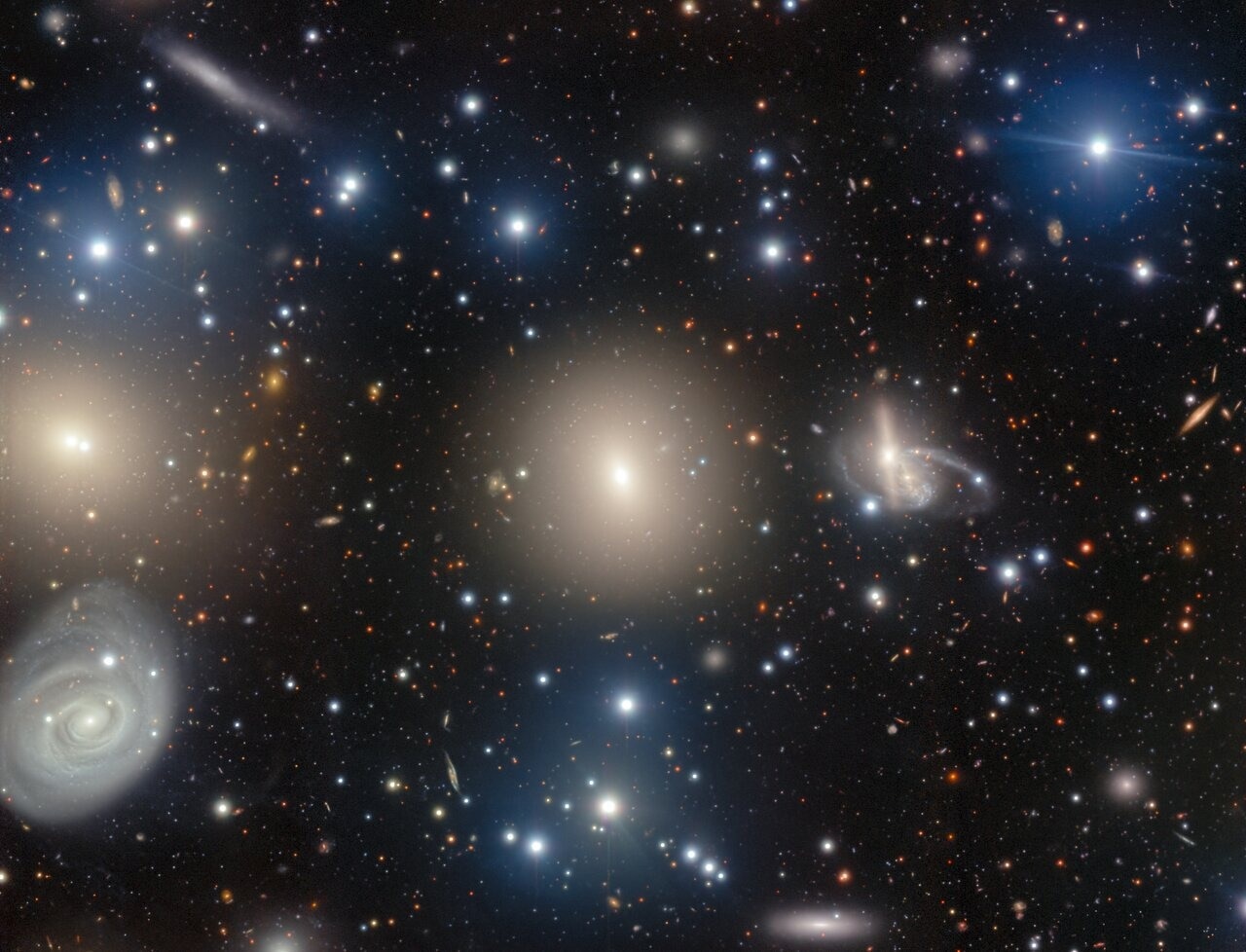Huge galaxy clusters are answering contemporary cosmic questions a century after astronomers demonstrated that galaxies outside of the Milky Way exist.
 100 years ago, Edwin Hubble discovered decisive evidence that other galaxies existed far beyond the Milky Way. This image, captured by the Gemini North telescope, one half of the International Gemini Observatory, features a portion of the enormous Perseus Cluster, showcasing its ‘island Universes’ in awe-inspiring detail. Observations of these objects continue to shed light not only on their individual characteristics but also on cosmic mysteries such as dark matter. Image Credit: Noir Lab
100 years ago, Edwin Hubble discovered decisive evidence that other galaxies existed far beyond the Milky Way. This image, captured by the Gemini North telescope, one half of the International Gemini Observatory, features a portion of the enormous Perseus Cluster, showcasing its ‘island Universes’ in awe-inspiring detail. Observations of these objects continue to shed light not only on their individual characteristics but also on cosmic mysteries such as dark matter. Image Credit: Noir Lab
Images like these are among the most stunning of the many views of the Universe available through modern telescopes. They demonstrate the immense size and diversity of the universe by being dotted with innumerable, unfathomably large galaxies.
The elliptical galaxy NGC 1270 takes center stage here, dazzling in its apparent simplicity as it casts an ethereal glow into the surrounding darkness. Furthermore, this object is a part of something much larger than itself, even though it might appear to be an island lost in the vast ocean of space.
The Perseus Cluster, a collection of thousands of galaxies located in the constellation Perseus, some 240 million light-years from Earth, includes NGC 1270 as one of its members.
The image captures a stunning collection of galaxies in the center of this massive cluster. It was taken with the Gemini Multi-Object Spectrograph (GMOS) on the Gemini North telescope, one-half of the International Gemini Observatory, which is run by NSF NOIRLab and partially funded by the U.S. National Science Foundation.
It is astounding to consider that when NGC 1270 was first discovered in 1863, it was not generally believed that other galaxies existed. This is evident when looking at such a diverse array, displayed here in breathtaking clarity. Due to their hazy, amorphous appearance, many objects now recognized as galaxies were first classified as nebulae.
Several astronomers have conjectured—but not proven—that they are objects comparable in size to the Milky Way, or “island Universes,” as Immanuel Kant dubbed them. Instead, they were perceived by many as smaller objects on the edge of the Milky Way, which many people thought made up the majority of the universe.
In 1920, astronomers Heber Curtis and Harlow Shapley engaged in the renowned Great Debate, which focused on the nature of these enigmatic objects and the size of the universe. Edwin Hubble used the Hooker Telescope at Mount Wilson Observatory to observe stars inside some of the nebulae and determine their distance from Earth in 1924, which resolved the controversy.
They were far outside the Milky Way, and the results were definitive. With countless odd, distant galaxies as big and complex as our own, astronomers' conception of the cosmos has drastically changed.
Astronomers have been able to examine these “island Universes” more closely to make educated guesses about their possible characteristics as imaging methods have advanced and penetrated farther and deeper into space. For example, scientists have detected strong electromagnetic energy from NGC 1270’s core, indicating that a supermassive black hole is frantically feeding there.
Approximately 10% of galaxies exhibit this feature, which can be identified by the presence of an accretion disk, a powerful vortex of matter that swirls around and is progressively consumed by the central black hole.
Astronomers are not just interested in individual galaxies; their interactions and relationships with one another provide clues to many mysteries. For instance, massive clusters like the Perseus Cluster suggest the existence of the mysterious material known as dark matter.
Astronomers believe that rather than assembling into densely populated clusters, galaxies would be distributed more or less evenly throughout space if there were no such invisible, gravitationally interactive material. According to current theories, galaxies are drawn together by an invisible web of dark matter at the points where their colossal tendrils intersect, where their gravitational pull is greatest.
The nature of dark matter itself is still unknown despite its use to explain observed cosmic structures. Looking at images like this one and reflecting on the progress made in understanding over the past century gives a tantalizing glimpse of how much more might be found in the decades to come. Perhaps hints for the next major discovery can be found in images like these. In another century, how much more will be known about the universe?